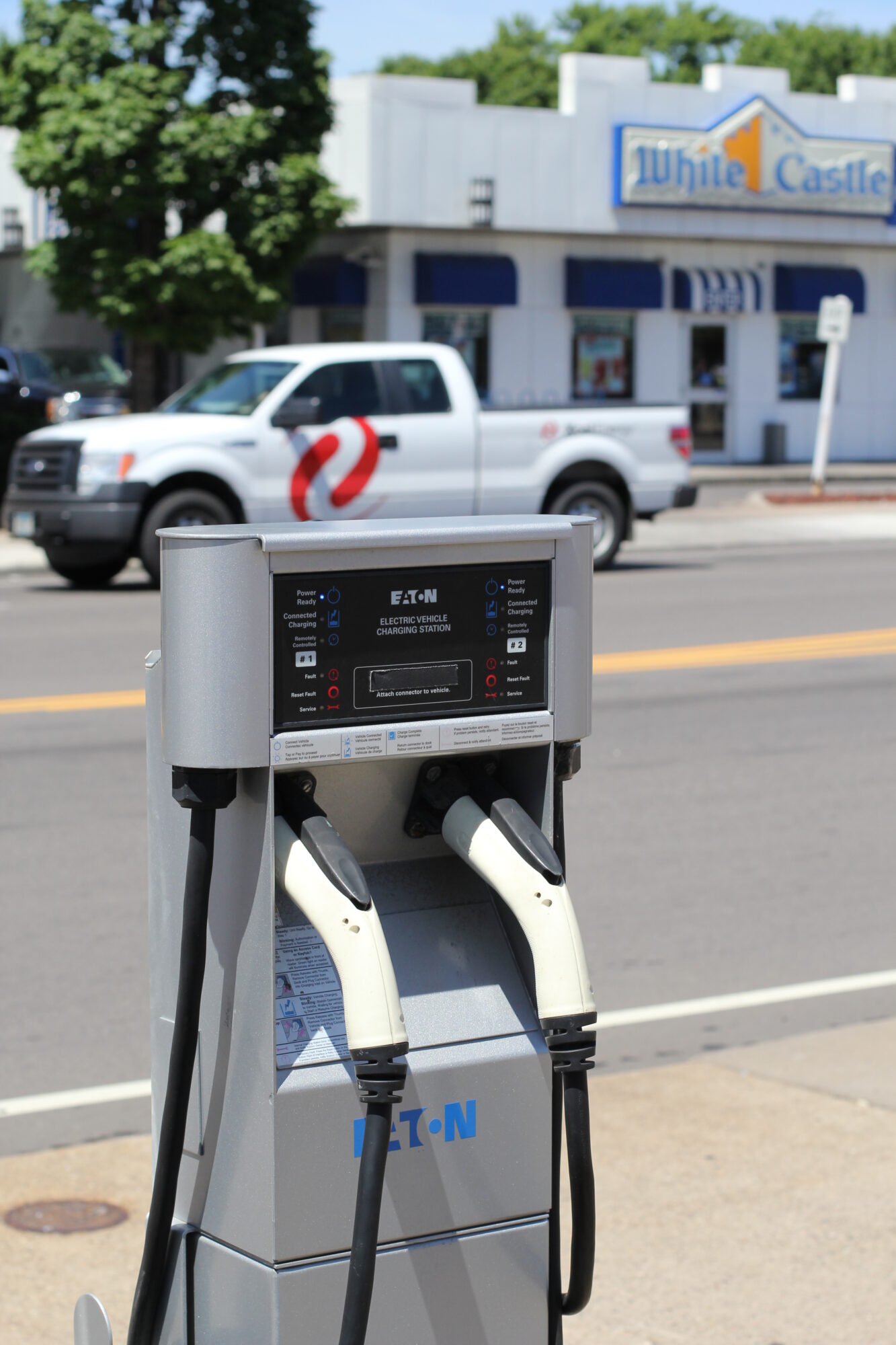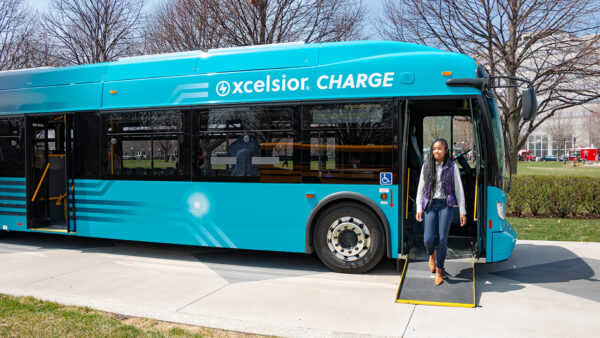
Here at Fresh Energy, regulatory issues are our bread and butter. Week in and out, you’ll find Fresh Energy staff digging into the big issues of the day related to how utilities can and should be preparing themselves and customers for the clean energy transition ahead, such as our state’s ever-increasing adoption of electric vehicles. In fact, 2023 saw 6.6% of new vehicle sales being electric in Minnesota! But how are utilities keeping up?
The answer is, as with many clean energy areas these days, through lots of regulatory planning, primarily in the form of Transportation Electrification Plans (TEPs). But what are TEPs, and how did they come to be? And what kinds of things do they include? Keep reading to learn all about them.
Transportation Electrification Plans: A Brief History

Electric vehicle (EV) planning and utility programs weren’t always organized into Transportation Electrification Plans. In fact, utilities themselves didn’t always think they had much of a role to play in spurring EV adoption that benefitted the grid. That all changed in the mid-to-late 2010s. First, the Minnesota legislature passed a law in 2014 that required investor-owned utilities like Xcel Energy to start offering electricity pricing to EV owners that would allow them to charge at off-peak times (i.e. when the electric grid was least used) at cheaper rates.
Building on this, Fresh Energy and our partners successfully made the case to the Minnesota Public Utilities Commission (PUC) to dive more deeply into utilities’ roles on transportation electrification via regulatory proceedings, officially called dockets. As a result, a PUC “inquiry” was opened in 2017, with the purpose of gathering as much information as possible on how EVs interacted with the electric grid, and what roles investor-owned utilities should play in supporting beneficial integration of EVs onto the electric grid. This PUC inquiry led to the creation of the first set of investor-owned utility Transportation Electrification Plans (TEPs) in 2019.
However, these initial TEPs weren’t what they are today. Originally, TEPs were meant to preview how investor-owned utilities were generally planning to support EV adoption. Actual pilots and program proposals were filed separately, though often spurred by discussions within the TEP dockets. Initially this worked, but as more and more EV program proposals of increasing complexity and scope were offered by investor-owned utilities, it became clear that a comprehensive approach that included planning, forecasting, and specific program proposals together with distribution grid planning was needed to ensure efficient and effective review and decision-making. As such, in 2022, the TEPs were added as a section to the Integrated Distribution Plan, with a goal to include EV program proposals, as laid out in state legislation that passed in 2023. The first IDP-integrated TEP was filed in November 2023 and will follow a two-year cycle, with the next one expected in 2025.
Fresh Energy’s take on Xcel Energy’s Transportation Electrification Plan
While all investor-owned utilities must submit TEPs, Xcel Energy’s is by far the most pressing, as more than 90% of Minnesota’s roughly 50,000 EV registrations in the state are in its service territory. Xcel’s 2023 TEP proposed expansions of existing residential and commercial EV charging programs, a new “home wiring rebate” program that could complement the state electric panel upgrade grant program, and a vehicle-to-grid electric school bus demonstration.
Fresh Energy filed joint comments with the Union of Concerned Scientists, Sierra Club, Environmental Law and Policy Center, Minnesota Center for Environmental Advocacy, and Plug In America in December 2023 and January 2024. While we supported the proposals above, we highlighted additional areas for Xcel to continue to develop, including:
- Expanding its initial vehicle-to-grid electric school bus demonstration from two to 10 buses, while also supporting school bus operators in making the switch to electric school buses more generally;
- Continuing to innovate how to serve multifamily housing residents and renters with accessible and affordable EV charging, such as through curbside charging;
- Preparing for increasing electrification of heavy-duty vehicles, especially trucks;
- Coordinating internally between electric vehicle, energy efficiency, and building electrification planning, including the use of ECO programs to achieve its transportation electrification goals; and
- Examining how Xcel’s EV programs are equitably serving renters, customers of color, and under-resourced customers, and what gaps may remain.
If you’re interested, you can take a look at our full set of initial comments and reply comments.
What’s Next
On March 28, 2024, the PUC largely approved Xcel’s TEP proposals as-is, while directing Xcel to re-file its Home Wiring rebate as an ECO plan modification later this year. Fresh Energy and partners were pleased to see Xcel’s Residential EV Subscription pilot become permanent, and that investments for its residential EV advisory services and Commercial EV Fleet Pilot and Public Charging Pilot were approved.
Additionally, the PUC directed Xcel to propose a successor to its current multifamily housing EV charging pilot in its next TEP filing in 2025, along with many of the discussion items Fresh Energy and partners advocated for such as equity, heavy-duty vehicles, and coordination across energy efficiency and building electrification programs. While the vehicle-to-grid school bus pilot remains at two buses, we will continue to advocate for an expansion in future filings. Read the full Minnesota Public Utilities Commission order here.
In the meantime, Fresh Energy’s staff from the Clean Electricity, Buildings, and Transportation Departments will continue to discuss and collaborate on how we can best achieve an equitable clean energy transition in the regulatory arena together. As we get further down the path of electrifying everything we can, it’s clearer now more than ever that each of our economic sectors are intertwined such that success in one needs to complement success in another. Whether it’s building codes, including EV readiness provisions or utility planning that encompasses transportation and building electrification alongside renewable energy, Fresh Energy will make sure our teams are connected and coordinated on what we need to do to achieve our vision of a just, prosperous, and resilient clean energy future.



